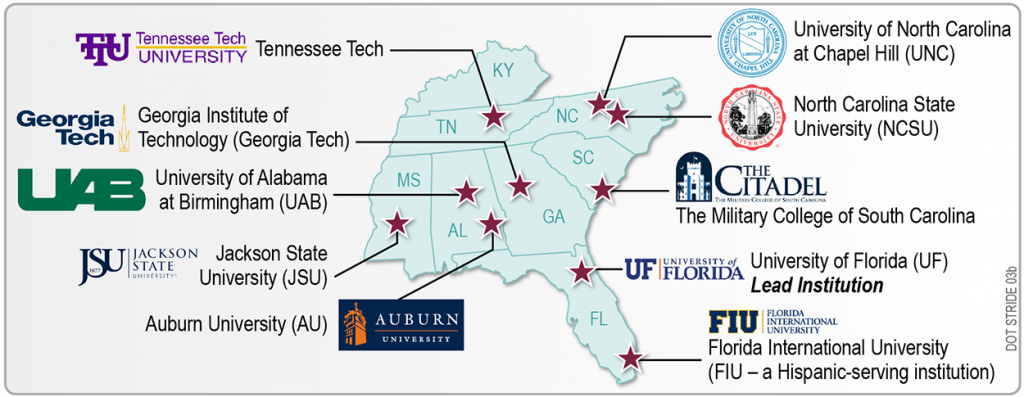 On June 2, 2017, the STRIDE Center, along with the University of Florida Transportation Institute’s (UFTI) Technology Transfer (T2) unit, will be hosting a one-day event to showcase various products resulting from STRIDE-funded research. This research is related specifically to the Center’s 2012 regional (Southeast) U.S. Department of Transportation grant-funded University Transportation Center (UTC). The 2012 STRIDE Center is housed at the UFTI, and includes partners at the following universities: Auburn University, The Citadel, Florida International University, Georgia Institute of Technology, Jackson State University, Tennessee Technological University, University of Alabama at Birmingham, University of North Carolina at Chapel Hill.
On June 2, 2017, the STRIDE Center, along with the University of Florida Transportation Institute’s (UFTI) Technology Transfer (T2) unit, will be hosting a one-day event to showcase various products resulting from STRIDE-funded research. This research is related specifically to the Center’s 2012 regional (Southeast) U.S. Department of Transportation grant-funded University Transportation Center (UTC). The 2012 STRIDE Center is housed at the UFTI, and includes partners at the following universities: Auburn University, The Citadel, Florida International University, Georgia Institute of Technology, Jackson State University, Tennessee Technological University, University of Alabama at Birmingham, University of North Carolina at Chapel Hill.
DATE: Friday, June 2, 2017
TIME: 8 am to 5 pm
WHERE: Emerson Alumni Hall, President’s Ballroom A, UF Campus, Gainesville, FL
COST: FREE! However, there will be a $75 charge if you are interested in receiving 6 PDHs.
***A Continental breakfast and lunch will be provided, including morning and afternoon breaks***
Seminar Agenda [view]
Registration Link: https://xms.dce.ufl.edu/reg/groups/ft/course.aspx?c=9814&ug=23
Abstracts & Presenter Biographies
Training Modules on Green/Sustainability Design and Rating Systems
Dr. Robert Peters, Ph.D., P.E., University of Alabama at Birmingham
Abstract: Posted Soon!
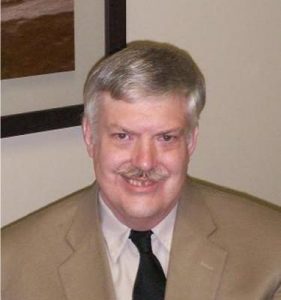 Dr. Robert Peters is a professor of Environmental Engineering in the Department of Civil, Construction, & Environmental Engineering at UAB, joining the School of Engineering faculty in 2001. Prior to his affiliation with UAB, he served for a year as Vice-President of Technology Development for a small business firm (TechSavants, Inc. located in Wheaton, Illinois). He also served for more than 14 years as Research Area Leader in the Energy Systems Division of Argonne National Laboratory in Argonne, Illinois, where he coordinated and supervised research activities in the soil and groundwater remediation area, focusing on physical/chemical treatment technologies. He is a registered Professional Engineer in the States of Illinois and Indiana and a certified Hazardous Waste Site Operations Worker. His research is funded by the U.S. Department of Energy, the University Transportation Center for Alabama, the Alabama Water Resources Research Institute, U.S. Fish and Wildlife Services, UAB Faculty Development Grant Program, and the American Electroplaters and Surface Finishers (AESF) Society.
Dr. Robert Peters is a professor of Environmental Engineering in the Department of Civil, Construction, & Environmental Engineering at UAB, joining the School of Engineering faculty in 2001. Prior to his affiliation with UAB, he served for a year as Vice-President of Technology Development for a small business firm (TechSavants, Inc. located in Wheaton, Illinois). He also served for more than 14 years as Research Area Leader in the Energy Systems Division of Argonne National Laboratory in Argonne, Illinois, where he coordinated and supervised research activities in the soil and groundwater remediation area, focusing on physical/chemical treatment technologies. He is a registered Professional Engineer in the States of Illinois and Indiana and a certified Hazardous Waste Site Operations Worker. His research is funded by the U.S. Department of Energy, the University Transportation Center for Alabama, the Alabama Water Resources Research Institute, U.S. Fish and Wildlife Services, UAB Faculty Development Grant Program, and the American Electroplaters and Surface Finishers (AESF) Society.
GIS-based Instructional Tool for Crash-Prediction Methods
Ilir Bejleri, Ph.D. and Siva Srinivasan Ph.D., University of Florida
Abstract: This project developed an interactive GIS web-based instructional tool for crash prediction methods. The crash prediction methodology is based on the part C of the HSM and the ultimate output is the expected crash frequency for selected facilities which, at this time, include Rural 2-lane Undivided Segments and Urban 4-leg Signalized Intersections. The tool provides users a tabular interface to interact with SPF parameters, CMFs, and the predicted crashes for any of the selected facilities. In all sections, the tool allows user to change the characteristics and the exposure measures in order to develop different scenarios and export the results of each scenario in CSV or Excel XML formats. This allows users to evaluate the impact of each CMFs on crash reductions and conduct various what-if analysis for each facility. The tool also allows the user to quickly look up the formulas and methods applied to each step of the calculation. Included is a self-instructing tutorial providing step-by-step guidance for segment- and intersection- level analyses.
 Dr. Ilir Bejleri is an Associate Professor and Co-Director of Geoplan Center in the department of Urban and Regional Planning at the University of Florida. His expertise is in the area of geospatial databases and analytical systems in transportation with focus on Planning, Environmental Management and Safety. Specifically in Safety, Dr. Bejleri has directed the research and development of Signal Four Analytics, a web-based crash analytical system widely used in the State of Florida by transportation safety professionals and academics.
Dr. Ilir Bejleri is an Associate Professor and Co-Director of Geoplan Center in the department of Urban and Regional Planning at the University of Florida. His expertise is in the area of geospatial databases and analytical systems in transportation with focus on Planning, Environmental Management and Safety. Specifically in Safety, Dr. Bejleri has directed the research and development of Signal Four Analytics, a web-based crash analytical system widely used in the State of Florida by transportation safety professionals and academics.
 Dr. Sivaramakrishnan (Siva) Srinivasan is an Associate Professor in the Department of Civil and Coastal Engineering at University of Florida. His research interests are in the area of Traveler Behavior Analysis and Transportation Planning and Safety. In particular, he focuses on the application of econometric methods to model travel behavior, crashes, and injury severity. He has worked extensively with the crash data from the state of Florida to develop analytical models to predict crash frequency and injury severity. He has also been involved in the calibration of HSM equations to the state of Florida. His safety-research work has been published in major journal including Accident Analysis and Prevention and Natural Hazards. He is the chair of the Transportation Research Board Committee on Effects of Information and Communication Technologies of Travel Choices.
Dr. Sivaramakrishnan (Siva) Srinivasan is an Associate Professor in the Department of Civil and Coastal Engineering at University of Florida. His research interests are in the area of Traveler Behavior Analysis and Transportation Planning and Safety. In particular, he focuses on the application of econometric methods to model travel behavior, crashes, and injury severity. He has worked extensively with the crash data from the state of Florida to develop analytical models to predict crash frequency and injury severity. He has also been involved in the calibration of HSM equations to the state of Florida. His safety-research work has been published in major journal including Accident Analysis and Prevention and Natural Hazards. He is the chair of the Transportation Research Board Committee on Effects of Information and Communication Technologies of Travel Choices.
Statewide Training of SafetyAnalyst in Florida
Priyanka Alluri, Ph.D., P.E., Florida International University
Abstract: Safety Analyst is a state-of-the-art analytical tool for making system-wide highway safety decisions. Often advertised as a companion to Part B of the Highway Safety Manual (HSM), Safety Analyst automates all the steps in the roadway safety management process. Florida Department of Transportation (FDOT) has been preparing for deploying Safety Analyst for the past few years. An important step in implementing Safety Analyst is to train the FDOT district officials on using the software. This presentation will provide the background on the traditional and new highway safety analysis methods. It primarily targeted the general audience who are interested in understanding the big picture of the highway safety analysis.
 Dr. Priyanka Alluri is currently an Assistant Professor with the Department of Civil and Environmental Engineering at Florida International University. She received her doctoral degree in Civil Engineering from Clemson University in 2010. Her research has focused on the areas of transportation safety, including advanced safety analysis models, implementation of the Highway Safety Manual (HSM) and Safety Analyst, pedestrian and bicycle safety, safety design of traffic control devices, and human factors in transportation. She is a registered Professional Engineer in the State of South Carolina. She is a member of the TRB Committee on Highway Safety Workforce Development (ANB23). She is also an active member of the Institute of Transportation Engineers (ITE), Women’s Transportation Seminar (WTS), and American Society of Civil Engineers (ASCE).
Dr. Priyanka Alluri is currently an Assistant Professor with the Department of Civil and Environmental Engineering at Florida International University. She received her doctoral degree in Civil Engineering from Clemson University in 2010. Her research has focused on the areas of transportation safety, including advanced safety analysis models, implementation of the Highway Safety Manual (HSM) and Safety Analyst, pedestrian and bicycle safety, safety design of traffic control devices, and human factors in transportation. She is a registered Professional Engineer in the State of South Carolina. She is a member of the TRB Committee on Highway Safety Workforce Development (ANB23). She is also an active member of the Institute of Transportation Engineers (ITE), Women’s Transportation Seminar (WTS), and American Society of Civil Engineers (ASCE).
Using Interactive Virtual Presence to Help Parents Install Child Restraints Correctly
David C. Schwebel, Ph.D., University of Alabama at Birmingham
Abstract: Child restraints are difficult to install correctly, and available data suggest a large portion of restraints currently on America’s roadways are improperly installed. Installation guidance from a certified technician is considered optimal to achieve correct installation, but there are multiple barriers to reaching parents for such installation, including convenience, cost, and accessibility in rural and remote areas. In a series of studies, we investigated use of interactive virtual presence – smartphone-based communication that offers simultaneous verbal and visual interchange with capacity for freezing images, using pointers and circles, and so on – to help parents install child restraints properly in their vehicles. Initial results from three studies offer promise that interactive virtual presence might be effective to improve accuracy of child restraint installation. Ultimately, we envision centralized “centers” where certified technicians would be present online to help consumers anywhere in a region or country to install their car seats via interactive virtual presence.
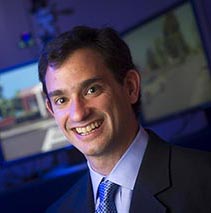 David C. Schwebel is University Professor of Psychology and Associate Dean at University of Alabama at Birmingham. He earned his B.A. from Yale University in 1994, his M.A. from University of Iowa in 1996, and his Ph.D. from University of Iowa in 2000. He completed a clinical psychology internship at University of Washington School of Medicine. Dr. Schwebel has published over 195 peer-reviewed manuscripts, most focusing on understanding and preventing unintentional injury in children. Specific risk factors of interest include temperament and personality, overestimation of physical ability and cognitive development, and adult supervision of children. From a prevention perspective, he has developed and implemented injury prevention techniques for pedestrian safety training in virtual reality environments, school playground safety via behavioral strategies targeting teachers, drowning prevention through lifeguard training at public swimming pools, dog bite prevention in rural China and in the United States, and kerosene safety in low-income South Africa neighborhoods. Dr. Schwebel is a Woodrow Wilson Scholar, a Fulbright Award winner, and a Fellow of the American Psychological Association. He has served as Principal Investigator on grants worth over $6.1 million and his research has been funded by NIH, CDC, DOT, several other federal, non-profit and industry groups.
David C. Schwebel is University Professor of Psychology and Associate Dean at University of Alabama at Birmingham. He earned his B.A. from Yale University in 1994, his M.A. from University of Iowa in 1996, and his Ph.D. from University of Iowa in 2000. He completed a clinical psychology internship at University of Washington School of Medicine. Dr. Schwebel has published over 195 peer-reviewed manuscripts, most focusing on understanding and preventing unintentional injury in children. Specific risk factors of interest include temperament and personality, overestimation of physical ability and cognitive development, and adult supervision of children. From a prevention perspective, he has developed and implemented injury prevention techniques for pedestrian safety training in virtual reality environments, school playground safety via behavioral strategies targeting teachers, drowning prevention through lifeguard training at public swimming pools, dog bite prevention in rural China and in the United States, and kerosene safety in low-income South Africa neighborhoods. Dr. Schwebel is a Woodrow Wilson Scholar, a Fulbright Award winner, and a Fellow of the American Psychological Association. He has served as Principal Investigator on grants worth over $6.1 million and his research has been funded by NIH, CDC, DOT, several other federal, non-profit and industry groups.
Bike&Place: A New Tool for Designing Active, Place-Making Transportation Networks
Brian J. Morton, Ph.D., Center for Urban & Regional Studies, University of North Carolina
Abstract: Bike&Place is a new, open-source tool for designing transportation networks that support both bicycle travel and convivial public places in towns and small cities. Those networks are both active and animating. Thus, Bike&Place is as much about place-making as it is about active transportation planning. More specifically, Bike&Place is an easy-to-use agent-based travel demand model developed for the purpose of predicting the increase in bicycle based accessibility that would result from enhancements of a roadway network that reduce the traffic stress which “Interested but Concerned” cyclists would experience while traveling on the network. Coined by Roger Geller (Portland’s Bicycle Coordinator), the term “Interested but Concerned” refers to the adults who would regularly travel via bicycle were transportation infrastructure more supportive. The “place” in Bike&Place refers to the geographical focus of the enhancements: the roadway links connecting residential neighborhoods (census blocks) and a “heart-and-soul” destination. The latter is a signature place—town square, park, arboretum, river walk, waterfront, greenway, trailhead, farmers’ market, historic business district. As the Orton Family Foundation has shown in many applications of their Community Heart & Soul™ planning process, recognition of the most emotionally significant places provides a powerful and unifying theme for town planning efforts. Heart-and-soul destinations are the places to which (bicycle) access is especially important. The seminar provides a comprehensive introduction to Bike&Place: the behavioral theory underpinning the travel demand model; step-by-step instructions for working with the model and tailoring it to a particular study area; and illustrating current and enhanced networks in 2D and 3D. Applications of Bike&Place are well within the capabilities of persons with basic GIS skills, even if they have no experience with travel demand models.
 Dr. Morton’s research interests center on development patterns, urban and regional air pollution, and transportation. His specialization is the study of the influence of development patterns on daily travel, especially in America’s small communities and rural areas. He builds simulation models that predict how changes in a region’s development patterns, economic structure, and transportation system affect traffic volumes, transportation-related air pollutant emissions, and air quality. Dr. Morton recently received a $649,995 grant from the Transportation Research Board to study the impacts of land use strategies on travel behavior in small communities and rural areas. For three representative case studies, his research team is developing simulation models that will estimate the potential benefits of mixed-use compact development. Over the past 20 years, He has worked for the U.S. Environmental Protection Agency, Environmental Defense Fund, and several consulting firms. He holds the Ph.D. in Agricultural and Resource Economics from the University of California at Berkeley.
Dr. Morton’s research interests center on development patterns, urban and regional air pollution, and transportation. His specialization is the study of the influence of development patterns on daily travel, especially in America’s small communities and rural areas. He builds simulation models that predict how changes in a region’s development patterns, economic structure, and transportation system affect traffic volumes, transportation-related air pollutant emissions, and air quality. Dr. Morton recently received a $649,995 grant from the Transportation Research Board to study the impacts of land use strategies on travel behavior in small communities and rural areas. For three representative case studies, his research team is developing simulation models that will estimate the potential benefits of mixed-use compact development. Over the past 20 years, He has worked for the U.S. Environmental Protection Agency, Environmental Defense Fund, and several consulting firms. He holds the Ph.D. in Agricultural and Resource Economics from the University of California at Berkeley.
Evaluation of Traffic Control Options in Work Zones
Virginia Sisiopiku, Ph.D., Associate Professor and Ossama Ramadan, Ph.D., Research Associate (University of Alabama at Birmingham)
Abstract: In this seminar, we present findings from a STRIDE-sponsored research study that evaluated four alternative temporary traffic control options in work zones. The purpose of the research was to study alternative bottleneck merge control strategies with a potential to minimize congestion at interstates work zones and improve relevant construction practices. In this presentation, we first introduce the current state-of-the-practice within State Departments of Transportation (DOTs). Next, we discuss the development and testing of temporary traffic control options in work zones and present the impacts of various work zone configurations and traffic control options on level-of-service, emissions, and travel time reliability. We also discuss a novel approach for performance-based work zone scheduling. This can be used as a decision-support tool by State DOTs and practitioners when choosing a traffic control strategy and time of day to setup work zones at interstate highways.
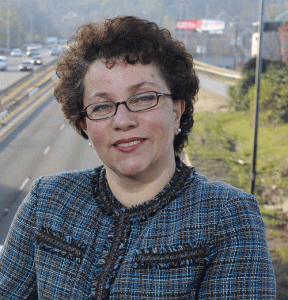 Dr. Virginia Sisiopiku is an Associate Professor in Civil, Construction, and Environmental Engineering at UAB. She has over 25 years of expertise in traffic operations and safety, congestion monitoring and intelligent transportation systems. Since joining UAB in 2002, she has served as the Director of the UAB transportation program and the Transportation Engineering and Development Laboratory (TREND Lab). She also leads the collaboration between UAB and the STRIDE Regional University Transportation Center (UTC). Prior to joining UAB, Dr. Sisiopiku was an Assistant Professor at Michigan State University and a faculty member of the Traffic Safety and Operation Center of Excellence. She also served as an Adjunct Faculty at the Illinois Institute of Technology and as a consulting transportation engineer in Illinois, Michigan, Alabama, and Georgia. She is a Fellow of ITE and the founder and faculty advisor of the UAB ITE Student Chapter. More information about Dr. Sisiopiku can be found at http://www.uab.edu/engineering/trendlab/sisiopiku.
Dr. Virginia Sisiopiku is an Associate Professor in Civil, Construction, and Environmental Engineering at UAB. She has over 25 years of expertise in traffic operations and safety, congestion monitoring and intelligent transportation systems. Since joining UAB in 2002, she has served as the Director of the UAB transportation program and the Transportation Engineering and Development Laboratory (TREND Lab). She also leads the collaboration between UAB and the STRIDE Regional University Transportation Center (UTC). Prior to joining UAB, Dr. Sisiopiku was an Assistant Professor at Michigan State University and a faculty member of the Traffic Safety and Operation Center of Excellence. She also served as an Adjunct Faculty at the Illinois Institute of Technology and as a consulting transportation engineer in Illinois, Michigan, Alabama, and Georgia. She is a Fellow of ITE and the founder and faculty advisor of the UAB ITE Student Chapter. More information about Dr. Sisiopiku can be found at http://www.uab.edu/engineering/trendlab/sisiopiku.
Dr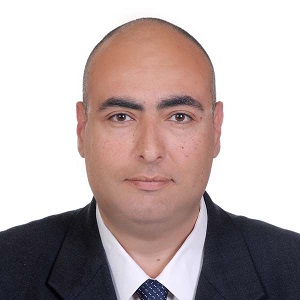 . Ossama Ramadan – is a Postdoctoral Fellow and Credentialed Course Instructor at the UAB Department of Civil, Construction, and Environmental Engineering. He earned his Ph.D. from UAB, Master’s from Carleton University (Canada), and Bachelor’s from AASTMT (Egypt), all in Civil Engineering with emphasis on Transportation Engineering. He has 18 years of professional and academic experience in diverse settings (US, Canada, and Egypt). During his academic career with UAB, he contributed to 9 sponsored research projects; authored 22 publications and presentations; and was awarded 8 local and regional awards. Currently, his research focus concerns highway traffic operations and transportation modeling. Dr. Ramadan is a member of the American Society of Civil Engineers (ASCE), Institute of Transportation Engineers (ITE), Institute for Sustainable Infrastructure (ISI), and the American Society for Engineering Education (ASEE). Additionally, he serves as a reviewer for the TRB Committee on Transportation Safety Management and the ASEE Civil Engineering Division.
. Ossama Ramadan – is a Postdoctoral Fellow and Credentialed Course Instructor at the UAB Department of Civil, Construction, and Environmental Engineering. He earned his Ph.D. from UAB, Master’s from Carleton University (Canada), and Bachelor’s from AASTMT (Egypt), all in Civil Engineering with emphasis on Transportation Engineering. He has 18 years of professional and academic experience in diverse settings (US, Canada, and Egypt). During his academic career with UAB, he contributed to 9 sponsored research projects; authored 22 publications and presentations; and was awarded 8 local and regional awards. Currently, his research focus concerns highway traffic operations and transportation modeling. Dr. Ramadan is a member of the American Society of Civil Engineers (ASCE), Institute of Transportation Engineers (ITE), Institute for Sustainable Infrastructure (ISI), and the American Society for Engineering Education (ASEE). Additionally, he serves as a reviewer for the TRB Committee on Transportation Safety Management and the ASEE Civil Engineering Division.
Abstract: According to the US Department of Education, Americans spend $20 billion annually to bus 25 million elementary and secondary children to school. School districts and municipalities regularly make educational facility and land use decisions without fully understanding the impact of such decisions on overall school transportation costs. For example, school district facility decisions on whether to build, renovate, or close a district’s schools directly influence the location of schools within the district and, correspondingly, the district’s school transportation budget. These land use and transportation issues are particularly relevant for the southeastern United States, where, during the 2000s, the regional cost outlays averaged $9.4 billion per year for school construction and $3.1 billion per year for school transportation. These costs represent between 3.5 and 4.8 % of all education expenditures for each state in the southeastern region.
In this seminar we present results of two STRIDE-funded projects, Quantifying the Cost of School Transportation and Development of an Education Module and Workshops on Multi-modal Costs, in which we selected 20 recently-built schools in North Carolina (11 schools in urban, suburban and rural contexts) and Florida (9 schools in urban and rural contexts) and collected data on the multimodal costs of school transportation. Using these results, we developed a decision support tool, referred to as the School Transportation Cost Calculator, to estimate the public and private transport costs of potential school sites. This tool provides a multi-modal perspective on school transportation costs and school location selection by estimating the public capital costs on developing a transportation system in conjunction with annual public and private school transportation operation costs.

Ruth Steiner is a professor and director of the Center for Health and the Built Environment in the Department of Urban and Regional Planning and an affiliate faculty in the School of Natural Resources and Environment and the Transportation Institute at the University of Florida. Her research focuses on the coordination of transportation and land use, with a particular focus on planning for all modes of transportation and its impact on communities, the environment, and public health. Dr. Steiner has served on the Pedestrian Committee, Transportation and Land Development Committee and Transportation History Committee of the Transportation Research Board (TRB) and the Scientific Committee of the World Congress on Transportation Research Society (WCTRS). She is currently Society Editor for Transport Policy and a member of the Editorial Board for Case Studies in Transport Policy, The Journal of Planning Education and Research and University of Florida Press. She received the University of Florida Research Foundation Professorship from 2005-2007 and 2017-2019, and the Kermit Sigmon Citizen Participation Award from the Gainesville Urbanized Area Metropolitan Transportation Planning Organization in 2006.
Questions? Contact Ines Aviles-Spadoni, M.S., STRIDE Research Coordinator, at iaviles@ce.ufl.edu or at 352-294-7803.[/vc_column_text][/vc_column][/vc_row]